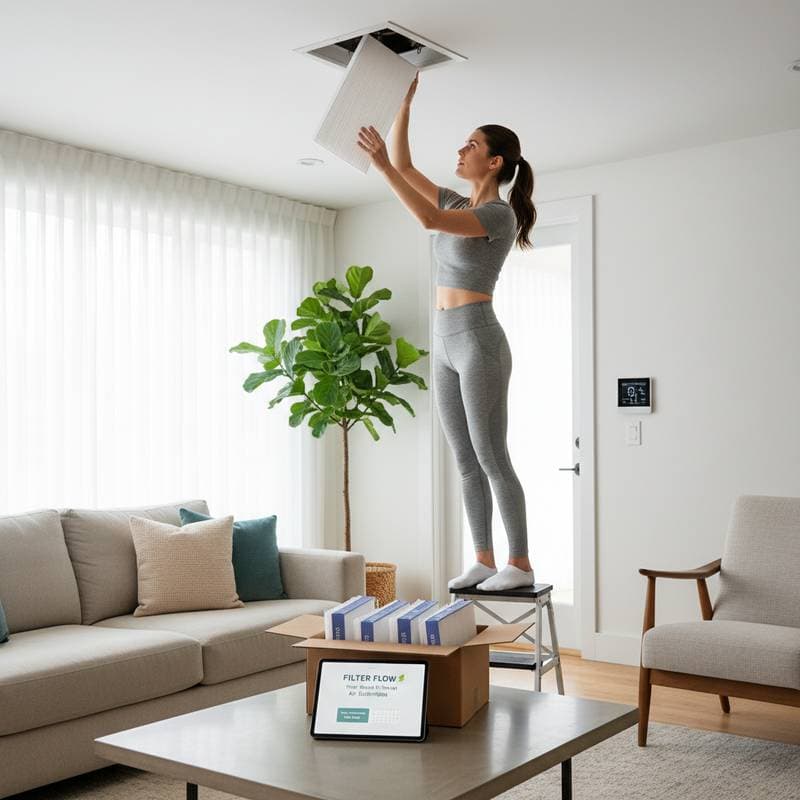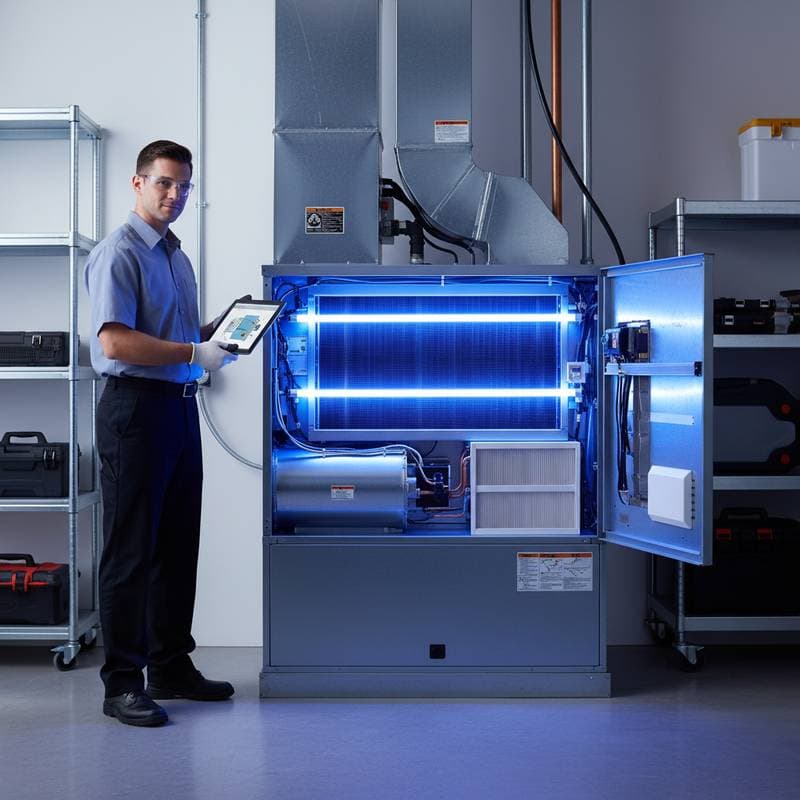How the HVAC Technician Shortage Is Sparking a DIY Air Filter Trend
Grasping the Shortage and Its Effects on Home System Care
The scarcity of certified HVAC technicians alters the way homeowners manage their heating, ventilation, and air conditioning systems. With professional services increasingly delayed, residents opt for self-directed upkeep, focusing on air filter changes. This evolution promotes a wave of DIY filter swaps and subscription deliveries, enabling systems to operate smoothly amid limited expert availability.
This piece details the shortage's influence on household air management practices, outlines secure homeowner actions for system oversight, and highlights how routine upkeep safeguards comfort while controlling energy expenditures.
Factors Propelling the DIY Air Filter Movement
Service delays compel homeowners to address minor tasks independently. Air filter replacement stands out as a straightforward method to sustain HVAC functionality. Regular exchanges enhance airflow, lessen equipment stress, and uphold indoor air purity.
Primary Drivers Behind the DIY Shift
- Availability: Filters appear in abundant supply at hardware outlets and digital marketplaces.
- Cost-Effectiveness: A single replacement typically ranges from $15 to $60, varying by dimensions and filtration level.
- Simplicity: Installation requires mere minutes and no specialized equipment.
- Prompt Outcomes: Fresh filters swiftly boost circulation and quiet system operation.
Homeowners observe that this routine extends equipment durability, particularly during periods of postponed professional visits.
Subscription Services for Effortless Filter Management
Subscription platforms simplify upkeep by shipping filters on a scheduled basis. These arrangements minimize oversight of replacement timelines and ensure consistent access to necessary components.
| Subscription Category | Typical Monthly Fee | Included Elements |
|---|---|---|
| Standard Shipment | $10 to $20 | Basic filters with monthly or quarterly arrivals |
| Advanced Option | $25 to $40 | Superior filtration for allergens or custom fits |
| Integrated Monitoring | $35 to $50 | Digital alerts, usage analytics, and quality assessments |
Such services foster adherence to maintenance routines, vital when technicians face scheduling constraints. Automated shipments prevent reliance on obstructed filters, which elevate utility costs and strain systems.
Advantages of Consistent DIY Filter Exchanges
Frequent filter updates yield tangible gains in expense control, air purity, and ventilation reliability.
Reduced Utility Expenses
Obstructed filters compel HVAC units to labor excessively, hiking power demands. Exchanges every one to three months may lower consumption by as much as 15 percent, influenced by unit state and household patterns.
Enhanced Air Purity Indoors
Effective filters capture debris, allergens, and contaminants. This proves crucial in environments with animals, sensitivities, or breathing concerns.
Prolonged Equipment Durability
Unhindered airflow spares motors and coils from excessive friction. Routine care averts malfunctions and postpones expensive overhauls.
Secure Procedures for Homeowner Filter Replacement
Although experts handle complex diagnostics and fixes, residents manage filter tasks with basic precautions.
- Power Down the Unit: Deactivate the HVAC system prior to any handling.
- Identify the Access Panel: Search for it adjacent to the intake vent or fan assembly.
- Extract the Used Filter: Withdraw it gently to contain airborne particles.
- Verify Dimensions: Note the specifications on the frame for accurate procurement.
- Position the Fresh Filter: Align it per the airflow indicators on the edge.
- Reactivate and Observe: Power on the system and assess for better ventilation.
Schedule future changes via calendar entries or digital tools. Labels on the panel serve as visual cues for tracking.
Common Questions on HVAC Filters
What Is the Ideal Replacement Frequency?
Standard filters warrant changes every one to three months, adjusted for environmental factors, occupancy, and operation intensity. Residences with pets or tobacco use benefit from monthly intervals. Advanced filters endure longer yet demand periodic evaluation.
Does DIY Upkeep Eliminate the Need for Experts?
Filter swaps complement but do not supplant professional oversight. Technicians evaluate coolant charges, wiring, conduit conditions, and other vital aspects beyond layperson reach.
What Risks Arise from Neglected Filters?
Accumulated grime hampers circulation, overtaxing the unit. Consequences include thermal excess, iced components, and ultimate breakdowns. Diminished flow compromises livability and air standards.
Do Subscription Plans Justify the Investment?
For those with demanding schedules or lapse-prone habits, these services prove economical. They guarantee punctual deliveries alongside guidance on broader system wellness.
Seeking Expert Assistance Strategically
DIY practices notwithstanding, annual technician evaluations ensure operational safety and optimization.
Essential Inquiries for Prospective Technicians
- Do you hold current licensing and insurance for home HVAC tasks?
- Which equipment brands or configurations do you service most proficiently?
- May I review testimonials from your latest projects?
- Do maintenance contracts or periodic evaluations form part of your offerings?
- How do you address urgent interventions?
- What turnaround time do you anticipate for appointments?
- Which filter varieties suit my setup best?
- Are incentives or enhancement initiatives accessible?
Sustaining HVAC Performance Amid Technician Constraints
The professional shortfall presents hurdles yet inspires proactive homeowner involvement. Through diligent filter rotations and subscription aids, individuals uphold system reliability, comfort levels, and fiscal prudence independent of service queues.





